This is an Eval Central archive copy, find the original at freshspectrum.com.
Have you ever noticed how the large well-known consulting firms seem to consistently get the biggest contracts. How is a small business even supposed to compete?
Maybe you’re not. But if you can’t beat ’em, join ’em.
In this post:
- Why the big companies tend to get the big contracts.
- The subcontracting business model.
- What are small business set asides and how do you specialize your services.
- How to follow the money and search for existing contracts.
- Rates, contract types, and other contracting things.
- Preview of this week’s awkward evaluation networking session.
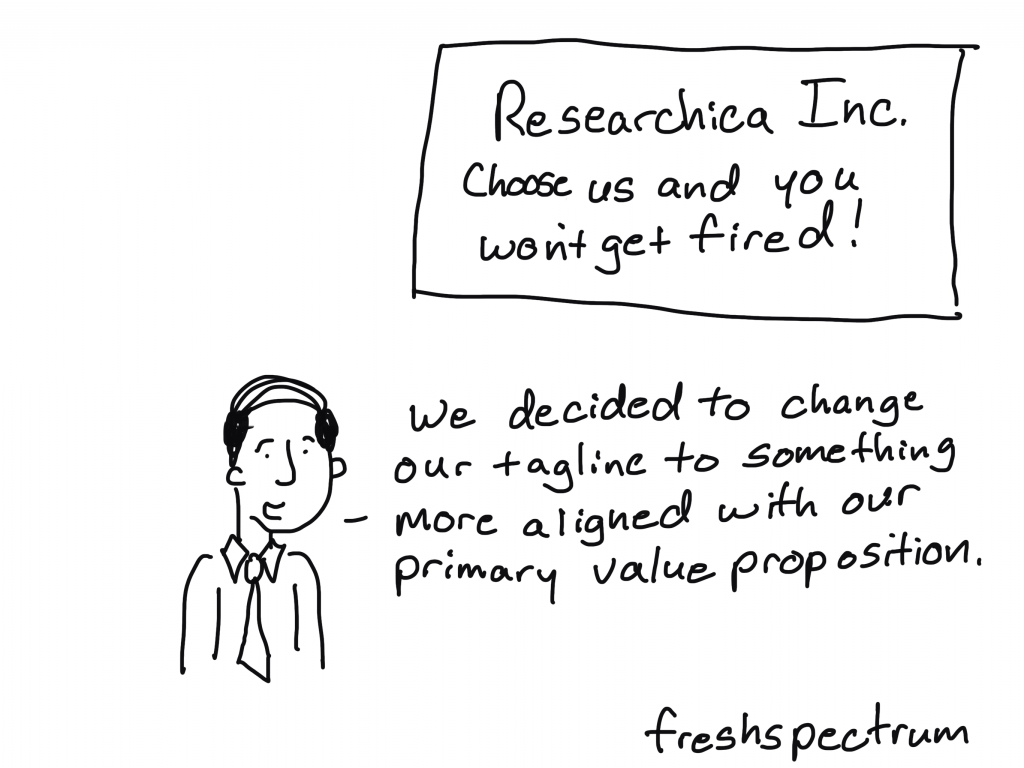
Why big companies get the big contracts?
You don’t get fired for hiring IBM.
Quoting one of my mentors, she adapted this from an IT industry catch phrase, “Nobody ever got fired for buying IBM.”
Let’s say that two experienced IBM employees decided to leave their positions and start a consulting business. Their idea was to offer consulting, the same thing they did for IBM, but for half the cost of what IBM would charge. In their minds it was a win win. They make more money and the client spends a lot less.
Same people, less money, win, win, right?
Except here is the problem. For the person hiring the consultants there is a big difference between hiring IBM to do the work and hiring two people who used to work at IBM.
As a former mentor of mine would say, “you don’t get fired for hiring IBM.”
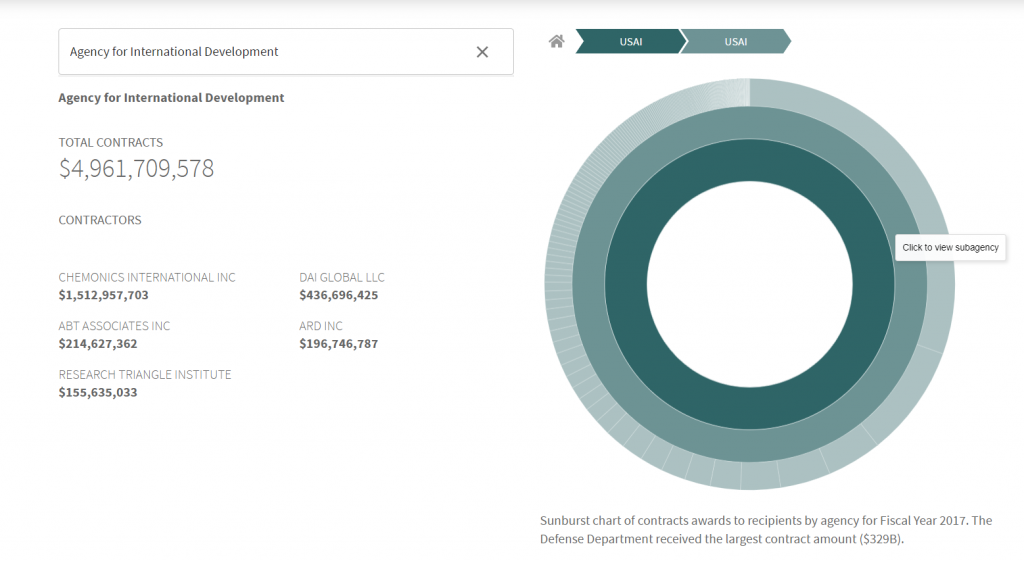
There is a reason that big consulting firms tend to win the big contracts. The client, let’s say the federal government, knows that if they choose one of their reliable steady partners, the work will get done. It might not be cutting edge and you could possibly get the work done cheaper elsewhere, but if your principal investigator retires, or the programmers quit, you know the positions will get refilled and the work will get done.
So this leaves you, as a small business person, with a choice.
You could fight the big competitors by pulling together an all start team and taking your best shot at a bid on that large federal contract.
Or, you partner with the big organization who has already shown they can win this kind of big contract.
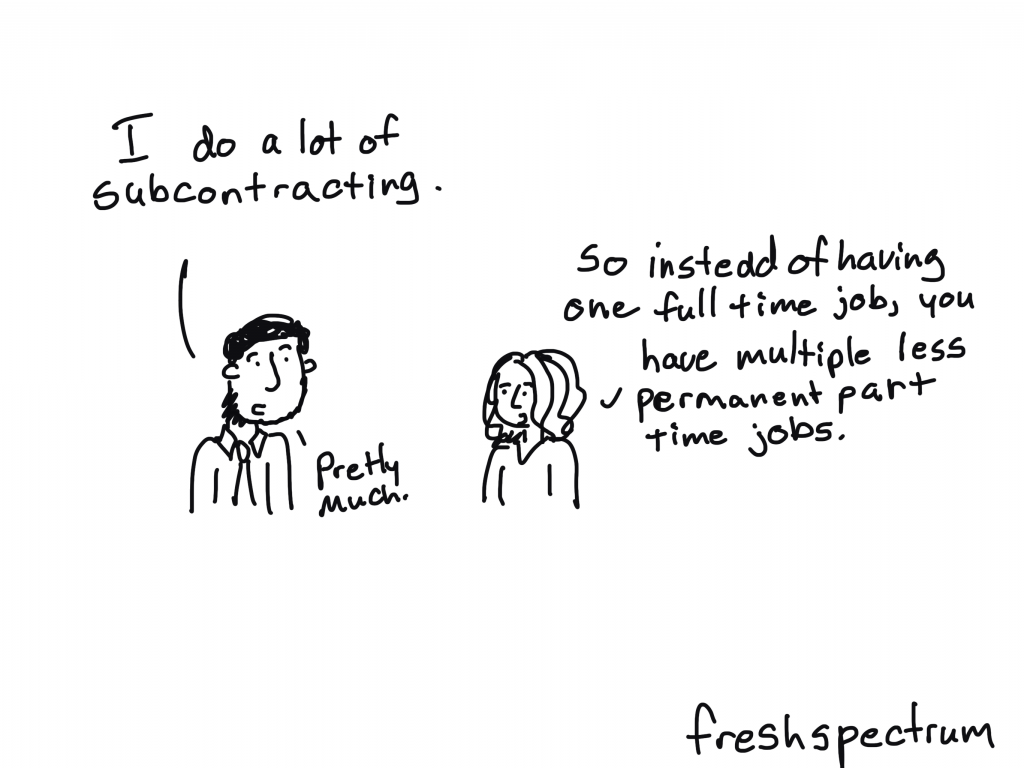
The Subcontracting Business Model
Be the remora, not the shark.
As an indie consultant or small business, you don’t need to win big contracts on your own to make enough money in the consulting world. Sometimes you don’t even need to participate in the proposal writing, just lending your name, bio, and resume can be enough if it adds something to the bid.
A successful subcontracting business model usually involves two things.
- Being Special
- Being Known
Let’s talk about how to do that.
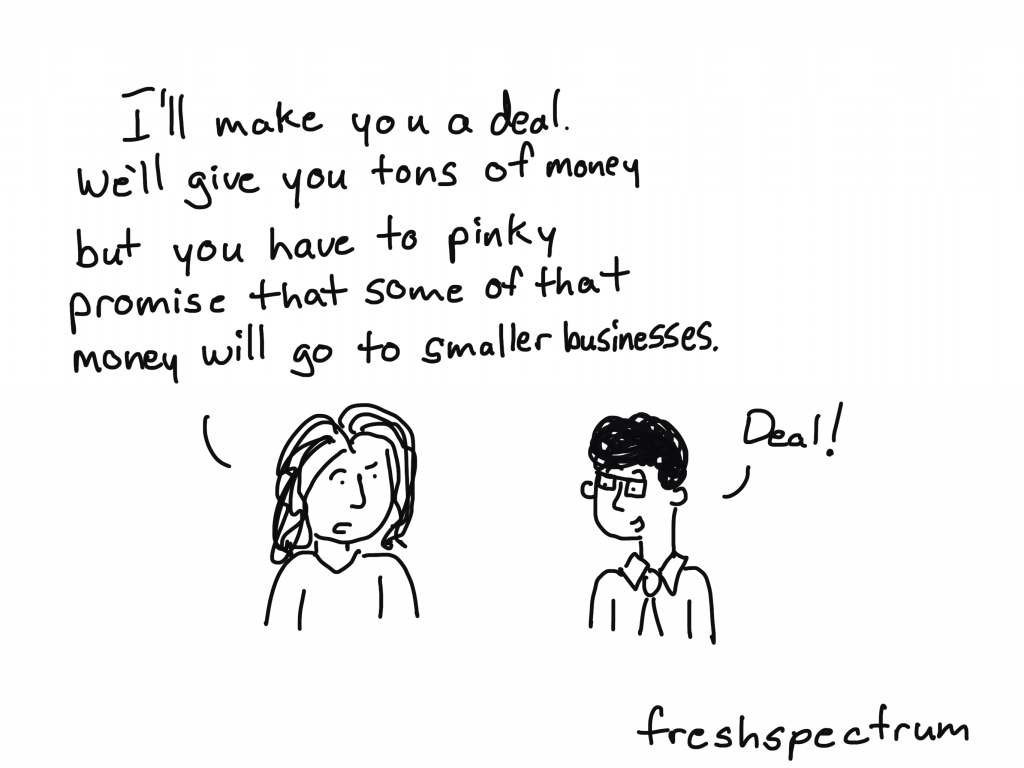
What are small business set-asides?
The federal government prefers to contract with small businesses whenever possible. Contracting officials can use set-aside and sole-source contracts to help their agencies meet their small business contracting goals.
How you should offer a contract will depend largely on two factors:
>The number and type of small businesses that are able to do the work
>How much the contract is worth
The federal government does hire a lot of big companies to do their work. But that doesn’t mean that there is no support built into these contracts to assist small businesses.
Small business set-asides are designed to push government agencies to work with smaller contractors. In addition to opportunities designed specifically for bid by small businesses, requirements are also built into larger cooperative agreements. Those larger contractors need to meet their small business set-aside numbers or face penalties.
Also, all small businesses are considered in the same way. Generally there are six federal classifications for small businesses.
Small Business (SB), Small Disadvantaged Business (SDB), Women-Owned Small Business (WOSB), Historically Underutilized Business Zones (HUBZ), Service-Disabled Veteran-Owned Small Business (SDVOSB), and Veteran-Owned Small Business (VOSB). If you want to do business with the federal government, and any of that is you, you can register at the SAM website.
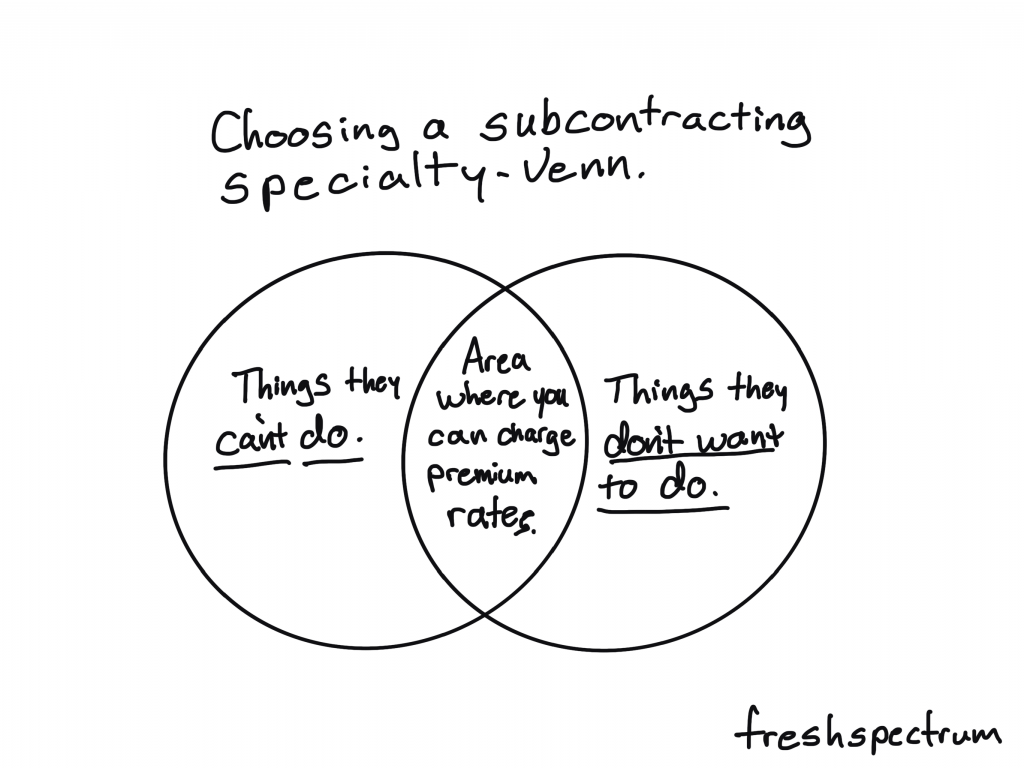
How to specialize your services.
Even the biggest consulting organizations have plenty of skill gaps.
Your best approach to securing more subcontracts is to offer something that the big organization cannot. Or offer something that the big organization does not have an interest in doing.
In my own work I tend to focus on services that fall into the overlap between design, tech, and evaluation. In larger organizations research/evaluation program staff, IT staff, and design/communications staff work out of different silos. If a project requires IT, you reach out to the IT team. If it requires design, you reach out to the design team.
But where they get thrown off is when something requires a mix of design, IT, and evaluation expertise. All of a sudden you need a room full of people to do what would be a simple project for someone like me. Plus, that room full of people can be filled with egos and occasional infighting because of office politics.
Sometimes an organization will subcontract, not because the organization doesn’t have the skill set (or a desire to develop the skill set) but because they would rather work with the people in the partner organization than certain people in their own.
Following the money and making new friends.
Lots of large consulting organizations have small business liaisons and offer partner applications on their websites (here is one for the aforementioned Chemonics). If you know you might want to work with an organization, you should know the liaison and put in a partnership application.
From my experience, I find it’s better to know the actual people doing the work that you would like to support. Making direct connections with people who run funded projects or people who bid on (and win) the kinds of projects you would like to support.
It’s easier to get paid consistently as a subcontractor if you can make yourself part of the original project bid. This requires relationship building, and collaboration. Use targeted networking strategies to get in front of the right people.
Exploring contract wins.
The federal government spends about $500 billion each year on contracts – that’s roughly the size of Sweden’s economy.
Ever wonder who’s getting federal contracts and what agencies are awarding them? This tool lets you explore contract-related information for FY 18, including which organizations received federal contracts, contract amounts, awarding agencies and sub-agencies, and the types of goods or services contract recipients provided to the federal government.
The good thing about federal spending is that there is a public paper trail.
You can find loads of information about the organizations receiving federal money through search at usaspending.gov. Through keyword searches you can find awards that match the type of work you support.
Once you find an interesting contract, go further and search some of the special numbers you’ll find, like the Procurement Instrument Identifier (PIID). Not only will you be able to find out what awards an organization receives, but how it plans to do the work, and how much it plans to pay it’s staff for different objectives.
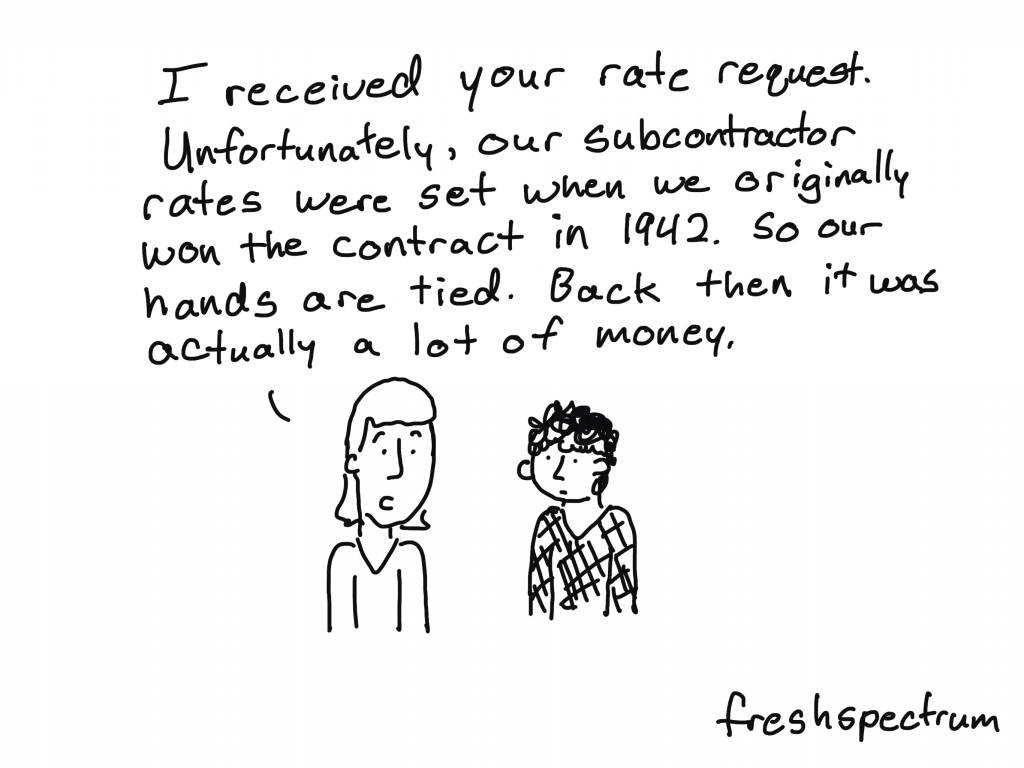
Rates, contract types, and other contracting things.
When working on Federal government contracts, some of your possible rates are going to be based on certain bureaucratic pay tables. This can limit some of your leverage as a professional, but it can also make your rate setting easier.
If your work requires travel, make sure to check out the GSA’s per diem rates.
There is a lot to learn when it comes to federal contracting. You don’t need to know it all to work as a subcontractor, but being informed about the type of contract/pay structure can certainly help you decide how target your services.
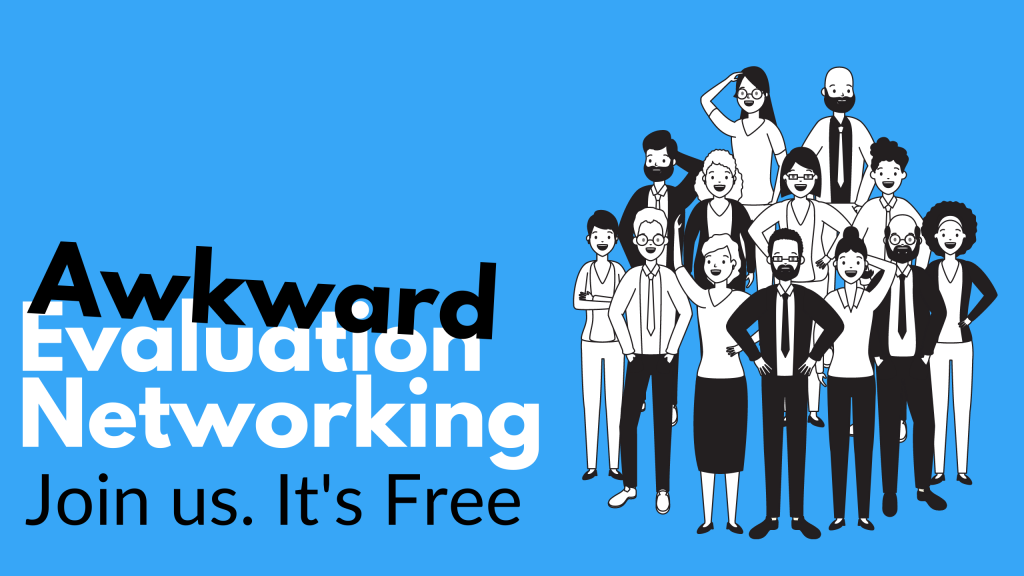
This week’s awkward evaluation networking session.
Join us for this week’s awkward evaluation networking session, on Wednesday, June 16 at 2PM Eastern. There is no featured networker this session but we do have a starter topic.
This week’s starter topic: Evaluation Subcontracting
You can register for the series and RSVP for the session, here: https://evaluationworkshops.com/p/evaluation-networking